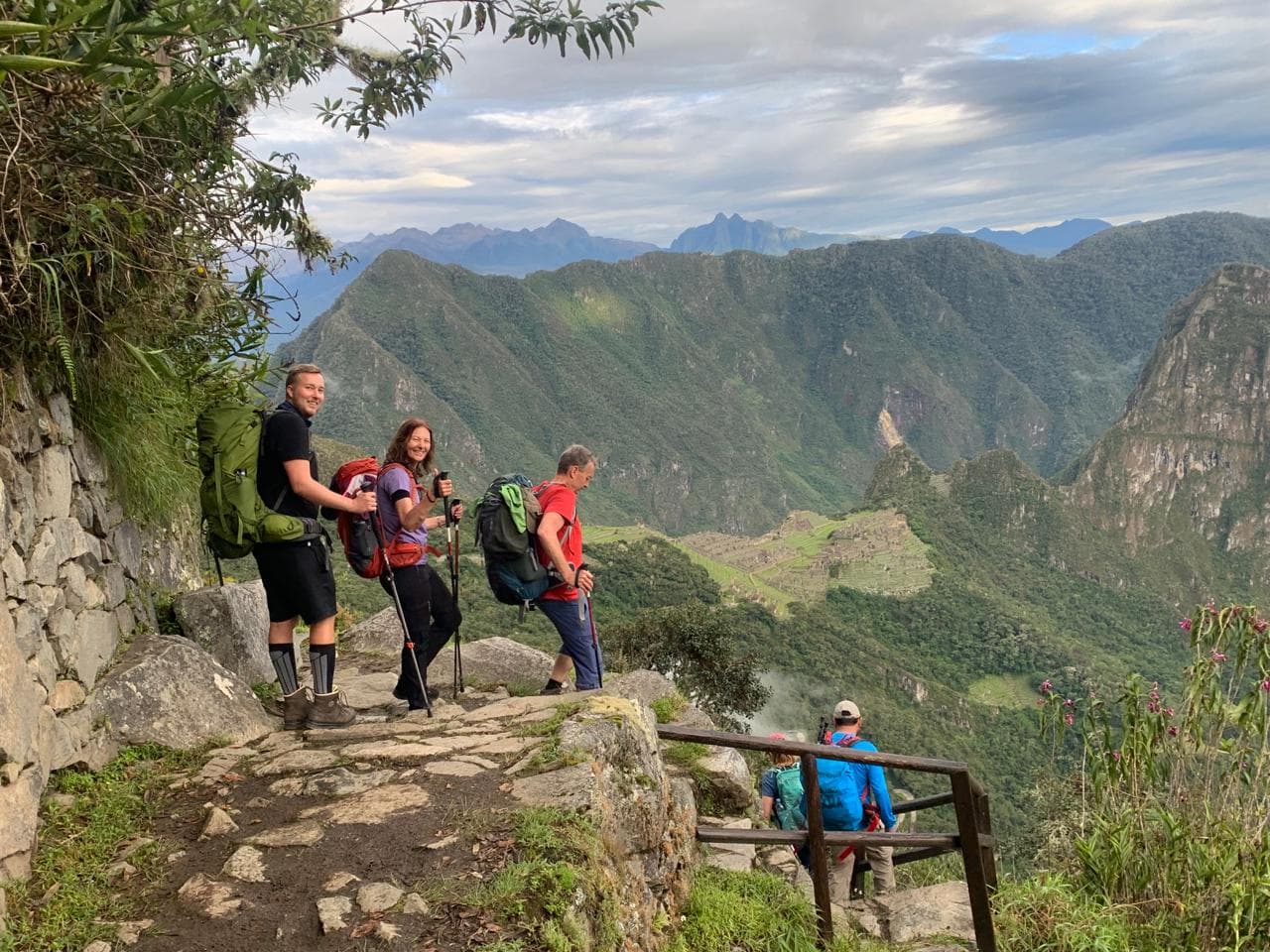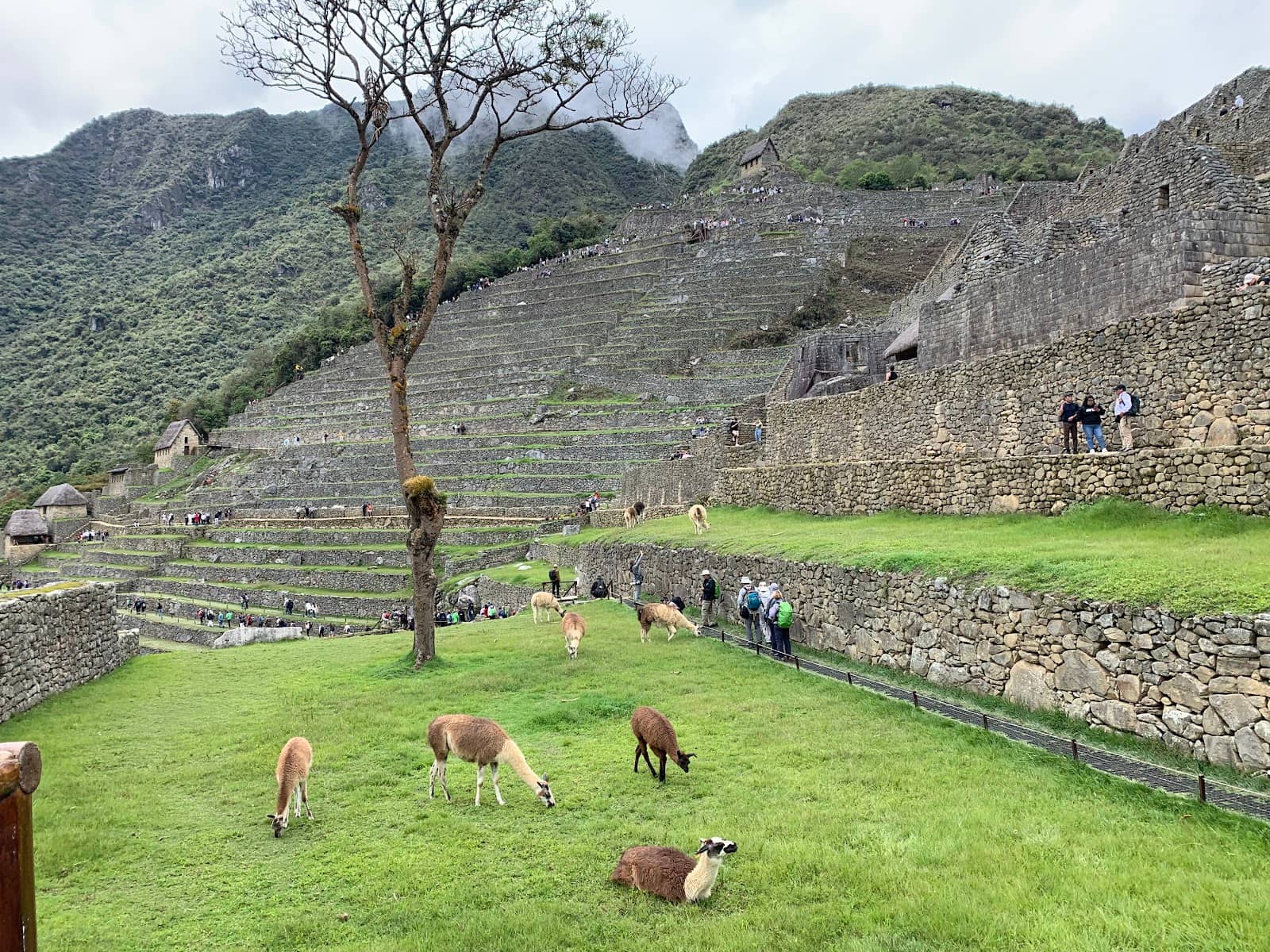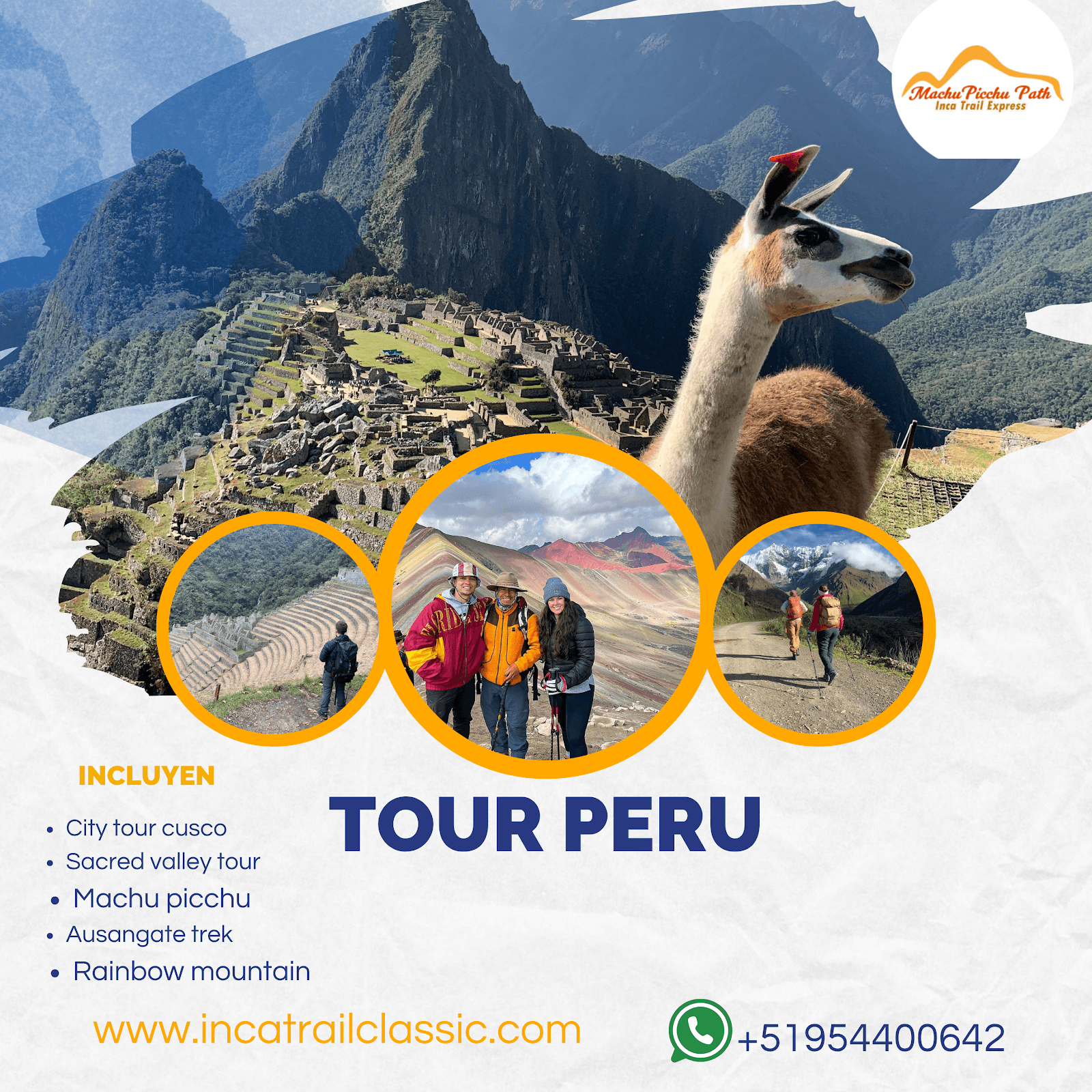
Inca Trail
Trek through ancient history and breathtaking Andes to reach the iconic Machu Picchu via the legendary Inca Trail.

Highlights
Must-see attractions

Social
From TikTok & Reddit
Best Time
Dry season, best for hiking

Inca Trail
Best Time
Dry season, best for hiking

Highlights
Must-see attractions
Trek through ancient history and breathtaking Andes to reach the iconic Machu Picchu via the legendary Inca Trail.
"Conquer the Inca Trail and witness Machu Picchu emerge from the mist – an unforgettable journey."

Pack Light, Pack Smart
Only bring essentials. Porters carry most gear, but your daypack should be manageable. :backpack:
Altitude Sickness Remedies
Chew coca leaves or drink coca tea to help with altitude. Acclimatize in Cusco first! :earofrice:

Highlights
Discover the most iconic attractions and experiences

Dead Woman's Pass (Warmiwañusca)
Highest point of the Inca Trail
Conquer the most challenging ascent and be rewarded with breathtaking panoramic views. A true test of endurance!

Inti Punku (Sun Gate)
Entrance to Machu Picchu
Your first glimpse of Machu Picchu from the Sun Gate is an unforgettable, iconic moment. Arrive at sunrise for a magical experience.

Inca Ruins Along the Trail
Various points on the Inca Trail
Explore fascinating ancient Inca sites like Runkurakay and Sayacmarca, offering a glimpse into history amidst stunning landscapes.

Wiñay Wayna
Near the end of the Inca Trail
A spectacular Inca citadel with intricate terraces and stone structures, often considered a highlight before reaching Machu Picchu.
Plans like a pro.
Thinks like you
Planning Your Visit
Book Your Inca Trail Permit Early!
Acclimatize in Cusco First
Best Times
Insider Tips
from TikTok, Instagram & Reddit
Pack Light, Pack Smart
Only bring essentials. Porters carry most gear, but your daypack should be manageable. :backpack:
Altitude Sickness Remedies
Chew coca leaves or drink coca tea to help with altitude. Acclimatize in Cusco first! :earofrice:
Train for the Climb
Hike regularly, focusing on inclines and endurance. Hills are scarce in some areas, so simulate them. :athletic_shoe:
Choose Your Trek Wisely
Consider the 4-day classic Inca Trail, the 2-day short Inca Trail, or alternatives like Salkantay. :mountain_cableway:
Tips
from all over the internet
Pack Light, Pack Smart
Only bring essentials. Porters carry most gear, but your daypack should be manageable. :backpack:
Altitude Sickness Remedies
Chew coca leaves or drink coca tea to help with altitude. Acclimatize in Cusco first! :earofrice:
Train for the Climb
Hike regularly, focusing on inclines and endurance. Hills are scarce in some areas, so simulate them. :athletic_shoe:
Choose Your Trek Wisely
Consider the 4-day classic Inca Trail, the 2-day short Inca Trail, or alternatives like Salkantay. :mountain_cableway:
Ethical Trekking Matters
Support agencies that treat porters ethically. They are the backbone of the trek. :heart:
Passport is Key
You'll need your passport for checkpoints along the trail and to enter Machu Picchu. :passport_control:
What Travellers Say
Reviews Summary
The Inca Trail is overwhelmingly praised for its breathtaking scenery, historical significance, and the incredible sense of accomplishment upon reaching Machu Picchu. Many highlight the challenging yet rewarding nature of the trek and the camaraderie formed with fellow hikers and guides. However, some find the altitude challenging and the permits difficult to secure.
What People Like
What People Dislike
Frequently Asked Questions
🚇 🗺️ Getting There
The classic Inca Trail typically starts in Kilometer 82, accessible by bus or taxi from Cusco. Most tour operators arrange transportation from your Cusco accommodation to the trailhead.
No, hiking the classic Inca Trail requires a licensed guide and a permit. Independent trekking is not allowed to preserve the trail.
The Inca Trail is the original route, offering historical ruins and stunning scenery. Other treks like Salkantay or Inca Jungle Trek offer different challenges and landscapes.
Flights from Lima to Cusco are the most common and take about 1.5 hours. Buses are available but take significantly longer, around 20-24 hours.
Most tour operators provide private bus transportation from Cusco to Kilometer 82, the starting point of the classic Inca Trail.
🎫 🎫 Tickets & Entry
Inca Trail permits are highly sought after and can sell out 6-12 months in advance, especially for the dry season (May-September). Book as early as possible!
No, Inca Trail permits must be booked in advance through a licensed tour operator. They are not available for purchase upon arrival.
The 4-day Inca Trail is the classic, full experience with multiple campsites and ruins. The 2-day Inca Trail is a shorter version, often starting closer to Machu Picchu and including the Sun Gate.
Your Inca Trail permit usually includes your entrance to Machu Picchu. Confirm this with your tour operator when booking.
The Inca Trail is generally open from March to January. It is closed every February for maintenance.
🎫 🥾 Onsite Experience
The Inca Trail is considered challenging due to its altitude, steep ascents, and long hiking days. Proper training and acclimatization are crucial.
The trail reaches altitudes of up to 13,828 feet (4,215 meters) at Dead Woman's Pass. Altitude sickness is a common concern.
Tour operators provide surprisingly delicious and nutritious meals, often including vegetarian and gluten-free options. Expect fresh ingredients and hot dishes.
Pack layers of clothing, waterproof gear, sturdy hiking boots, sunscreen, a hat, insect repellent, a headlamp, and personal medications.
Basic pit toilets are available at campsites and some rest stops. Campsites are designated and equipped with tents provided by tour operators.
📸 📸 Photography
Iconic spots include Dead Woman's Pass, the Sun Gate at sunrise, Wiñay Wayna, and various Inca ruins with dramatic mountain backdrops.
The thin air can make you breathless, so take your time. Ensure your camera batteries are protected from the cold, as they can drain faster.
Early mornings and late afternoons offer the best light for photography, with softer shadows and warmer tones. Sunrise at the Sun Gate is a must-capture moment.
Yes, smartphones are great for capturing the experience. Ensure you have enough storage and battery power, and consider a portable charger.
Generally, photography is allowed, but tripods and selfie sticks may be restricted in certain areas. Always follow the instructions of park rangers.
For Different Travelers
Tailored advice for your travel style
👨👩👧 Families with Kids
When planning a family trek, prioritize tour operators that are experienced with children and can accommodate specific dietary needs. Ensure children are adequately prepared physically and have had time to acclimatize to the altitude. Bringing along engaging activities for downtime at campsites can also enhance the experience for younger hikers.
Solo Travelers
Many solo travelers find that joining a reputable tour group is the best way to experience the Inca Trail. This ensures safety, logistics are handled, and you'll meet like-minded individuals from around the world. The shared challenge and stunning scenery often foster strong bonds among trekkers.
Budget Travelers
Consider traveling during the shoulder seasons (April, May, October, November) when prices might be slightly lower and crowds thinner. While luxury tours exist, many standard tours offer excellent value, providing necessary gear, food, and guides at a reasonable cost.
Deep Dives
In-depth insights and expert knowledge
Preparing for the Inca Trail: Training and Acclimatization
Crucially, acclimatization to altitude is paramount. Spending 2-3 days in Cusco (around 11,152 feet or 3,400 meters) before starting the trek allows your body to adjust. During this time, avoid strenuous activity, stay hydrated, and consider natural remedies like coca leaves or tea, which many travelers find helpful for alleviating altitude sickness symptoms.
Packing smart is also part of preparation. While porters carry the bulk of your gear on longer treks, your daypack should contain essentials like water, snacks, sunscreen, a hat, rain gear, and your camera. Ensure you have broken-in, waterproof hiking boots to prevent blisters and discomfort on the ancient stone paths.
Understanding Inca Trail Itineraries and Options
For those with less time or seeking a less strenuous option, the short Inca Trail (often 2 days, 1 night) is a popular alternative. This trek typically starts closer to Machu Picchu, allowing you to experience a portion of the Inca Trail and still arrive at the citadel through the Sun Gate. It's a great way to get a taste of the Inca Trail experience without committing to the full trek.
Beyond the Inca Trail itself, other treks like the Salkantay Trek and the Inca Jungle Trek offer different perspectives and challenges on the way to Machu Picchu. The Salkantay Trek is known for its dramatic mountain passes and remote beauty, while the Inca Jungle Trek combines hiking with activities like mountain biking and zip-lining.
The Role of Porters and Ethical Trekking
It's vital to choose tour operators who prioritize ethical treatment of porters. This includes fair wages, adequate food, proper gear, and reasonable working hours. Many travelers emphasize the importance of supporting companies that are transparent about their porter policies. Look for certifications or clear statements from operators regarding their commitment to porter welfare.
Respecting the local culture and environment is also a key aspect of responsible trekking. This means adhering to Leave No Trace principles, respecting archaeological sites, and engaging with local communities in a positive and mindful way.






Social
from TikTok, Instagram & Reddit